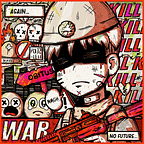“Transitory” Economies: The Stimulus Economy
Since the WHO (World Health Organization) declared COVID an official pandemic, time has taken on a different meaning, while the world has been disrupted in more ways than one.
This change is happening not only in perception, but in reality. Things are moving faster than ever, if they can.
Commuting is on its way out. Curbside pickup has made shopping more efficient. Small business retailers, who previously relied on their vendors to move inventory, now run vast, direct to consumer, web 2.0 store fronts.
The Stimulus Economy
On March 27th, 2020 Donald Trump signed the Coronavirus Aid, Relief, and Economic Safety Act, or CARES Act for short, inserting over $2.2 trillion into the U.S. economy. Although this seemed massive at the time, there is precedent in recent history. During the Financial Crisis of 2008, George W. Bush would sign the Troubled Asset Relief Program (TARP), while later on, Barrack Obama would sign the American Economic Recovery and Reinvestment Act in 2009. Collectively, these two programs would move over $1.5 Trillion into industries most affected during the Financial Crisis. This included relief for homeowners attached to sub-prime mortgage loans, as well as the banking and auto industries. Generally speaking, economists agree that the targeted government spending likely helped avert a much worse Great Depression type event. Using the Financial Crisis as their template, fiscal and monetary policymakers had a better idea of how to handle the slowdown in economic activity.
The Stimulus Economy was necessary to support citizens and businesses. COVID caused an unprecedented (in recent times) slowdown in economic activity, and without the stimulus bills, many businesses would have failed, people would be declaring bankruptcy. However, did we do too much? How would we know?
